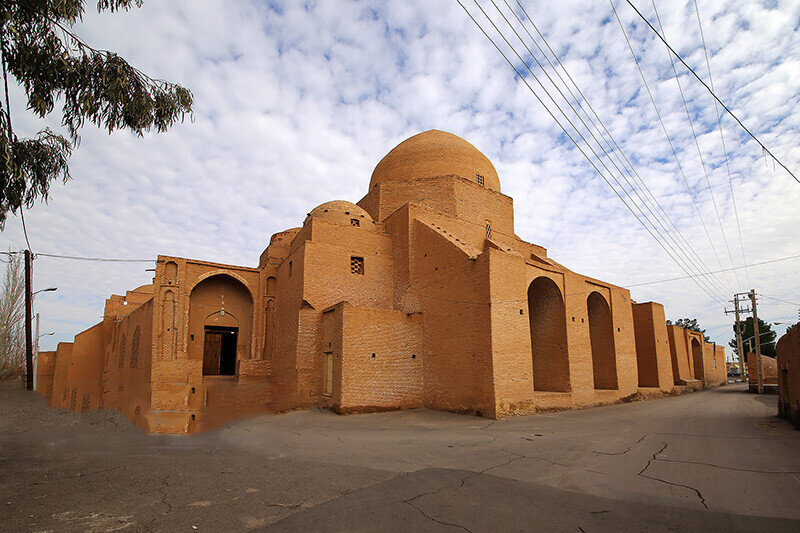Iran seeks UNESCO status for ‘world’s first' two-story mosque

TEHRAN – Iran has developed a dossier for a possible inscription of the Jameh Mosque of Ardestan on the UNESCO World Heritage list as the "world’s first" two-story mosque, Ardestan’s tourism chief has said.
A comprehensive dossier has been prepared and submitted to the United Nations cultural body, which should be followed by the city’s tourism officials, Mehdi Mashhadi announced on Wednesday.
Jameh Mosque of Ardestan is arguably one of the finest works of Islamic architecture in the whole country, and it should be preserved to the fullest extent possible, the official added.
Located in an ancient oasis town of the same name in the central province of Isfahan, the Jameh Mosque of Ardestan is of high historical importance as it incorporates successive architectural styles of the Sassanids, Buyids, Seljuks, and Safavids.
The Congregational Mosque of Ardestan is an early Islamic building with many accretions over its long history of use. However, a majority of what visitors to the mosque see dates from the Seljuk era (ca. 1040–1196).
The two-story hypostyle mosque has a four-portico (iwan) courtyard surrounded by encircling arcades. The place of worship is part of larger premises that also include other mudbrick structures such as a cistern, a caravanserai, a marketplace, a bathhouse, and a madrasa.
According to ARCHNET, the earliest dated inscription on the building is from the 12th/6th c. AH, but evidence of an earlier mosque remains, suggesting that its original foundation could date to the 10th-11th/4th-5th c. AH or earlier.
The mosque stands on a site once occupied by a Sasanian structure, as evidenced by remains discovered in archaeological excavations. The early mosque was likely a hypostyle type, having a central courtyard surrounded by arcades.
Remains of some of these arcades in the current mosque show that they were covered with barrel vaults. As it stands today, the mosque occupies an irregular space centered on a rectangular courtyard with four iwans, incorporating pieces of the earlier hypostyle structure.
The mosque was inscribed on the national heritage list in 1931.
ABU/AFM

Leave a Comment